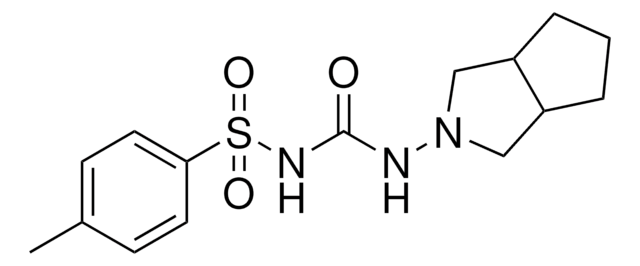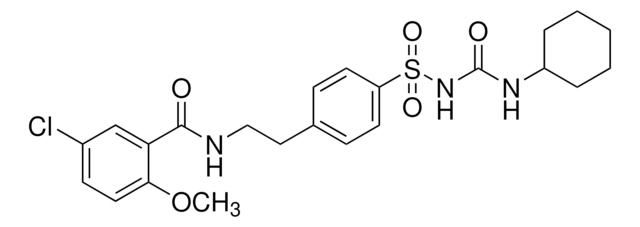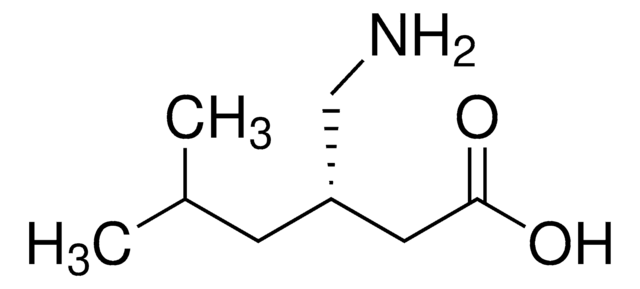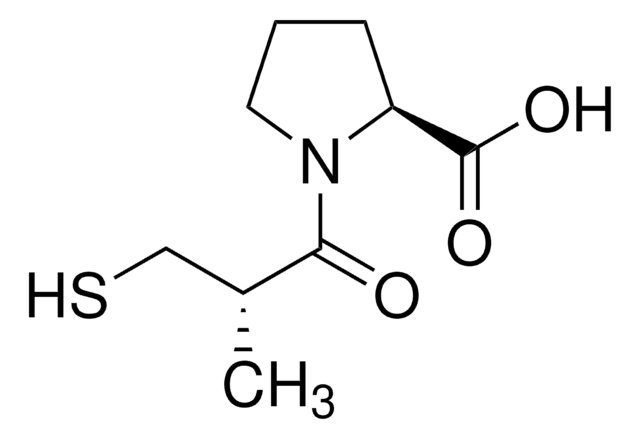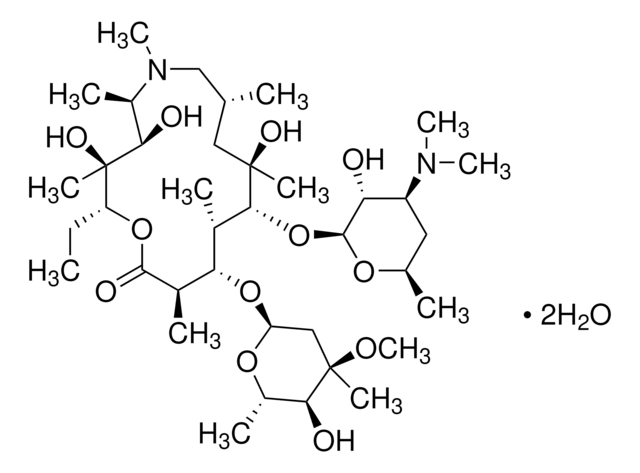G2167
Gliclazide
powder, ≥98%
Synonyme(s) :
1-(3-Azabicyclo[3.3.0]oct-3-yl)-3-p-tolylsulphonylurea
About This Item
Produits recommandés
Niveau de qualité
Essai
≥98%
Forme
powder
Couleur
white
Pf
163-169 °C (lit.)
Solubilité
methylene chloride: soluble
Auteur
Servier
Chaîne SMILES
Cc1ccc(cc1)S(=O)(=O)NC(=O)NN2CC3CCCC3C2
InChI
1S/C15H21N3O3S/c1-11-5-7-14(8-6-11)22(20,21)17-15(19)16-18-9-12-3-2-4-13(12)10-18/h5-8,12-13H,2-4,9-10H2,1H3,(H2,16,17,19)
Clé InChI
BOVGTQGAOIONJV-UHFFFAOYSA-N
Informations sur le gène
human ... KCNJ1(3758)
Vous recherchez des produits similaires ? Visite Guide de comparaison des produits
Application
- to study its antiglycative properties and to study its effects on the glycation of bovine serum albumin (BSA) structure
- as a reference standard in solid-phase extraction (SPE) followed by instrumental analysis using liquid chromatography-electrospray ionization tandem mass spectrometry (LC-ESI-MS/MS) for the quantification of water samples
- to develop and validate a simple, sensitive, rapid, economic and isocratic high-performance liquid chromatography (HPLC) method for the determination of gliclazide
Actions biochimiques/physiologiques
Caractéristiques et avantages
Mention d'avertissement
Warning
Mentions de danger
Conseils de prudence
Classification des risques
Acute Tox. 4 Oral
Code de la classe de stockage
11 - Combustible Solids
Classe de danger pour l'eau (WGK)
WGK 2
Point d'éclair (°F)
Not applicable
Point d'éclair (°C)
Not applicable
Équipement de protection individuelle
Eyeshields, Gloves, type N95 (US)
Faites votre choix parmi les versions les plus récentes :
Certificats d'analyse (COA)
Vous ne trouvez pas la bonne version ?
Si vous avez besoin d'une version particulière, vous pouvez rechercher un certificat spécifique par le numéro de lot.
Déjà en possession de ce produit ?
Retrouvez la documentation relative aux produits que vous avez récemment achetés dans la Bibliothèque de documents.
Les clients ont également consulté
Contenu apparenté
Discover Bioactive Small Molecules for Lipid Signaling Research
Notre équipe de scientifiques dispose d'une expérience dans tous les secteurs de la recherche, notamment en sciences de la vie, science des matériaux, synthèse chimique, chromatographie, analyse et dans de nombreux autres domaines..
Contacter notre Service technique